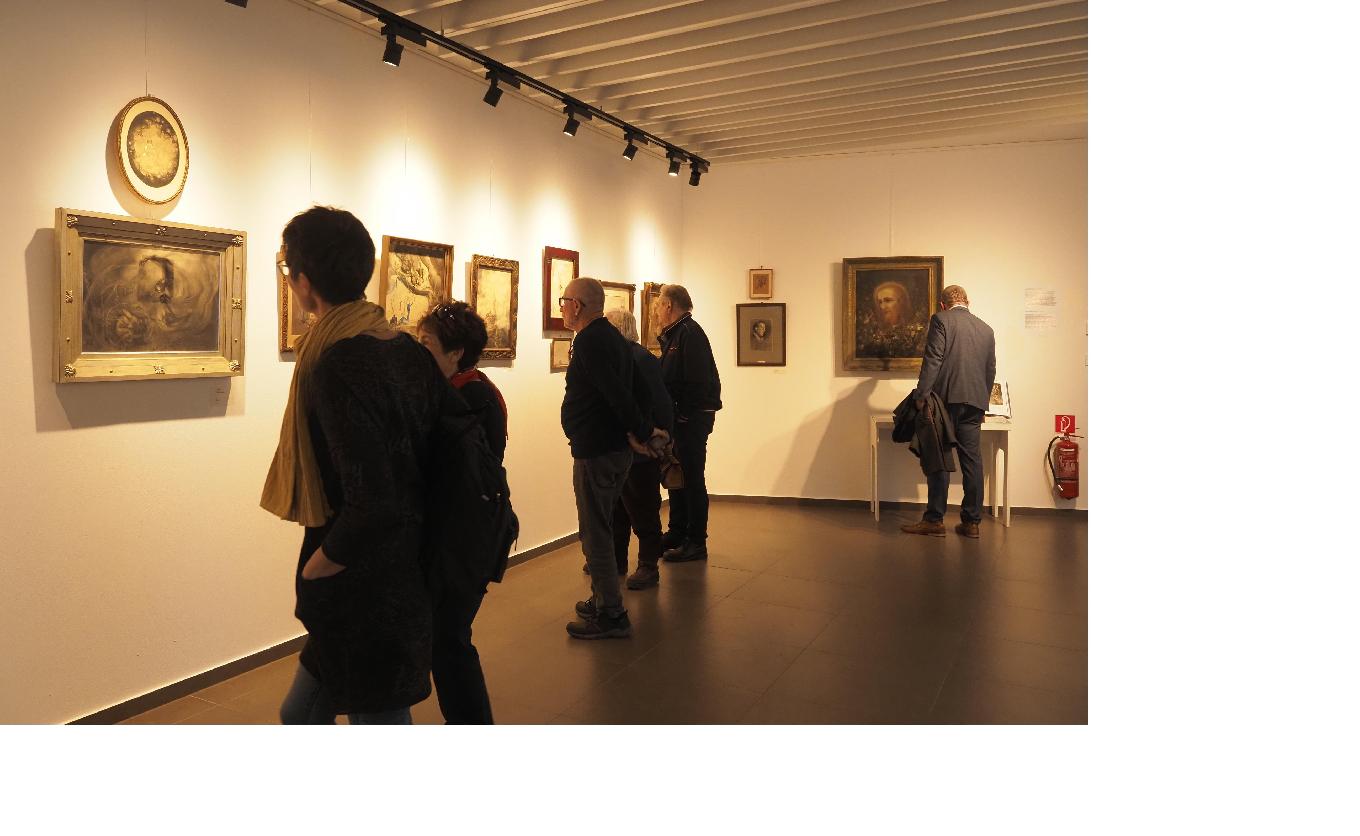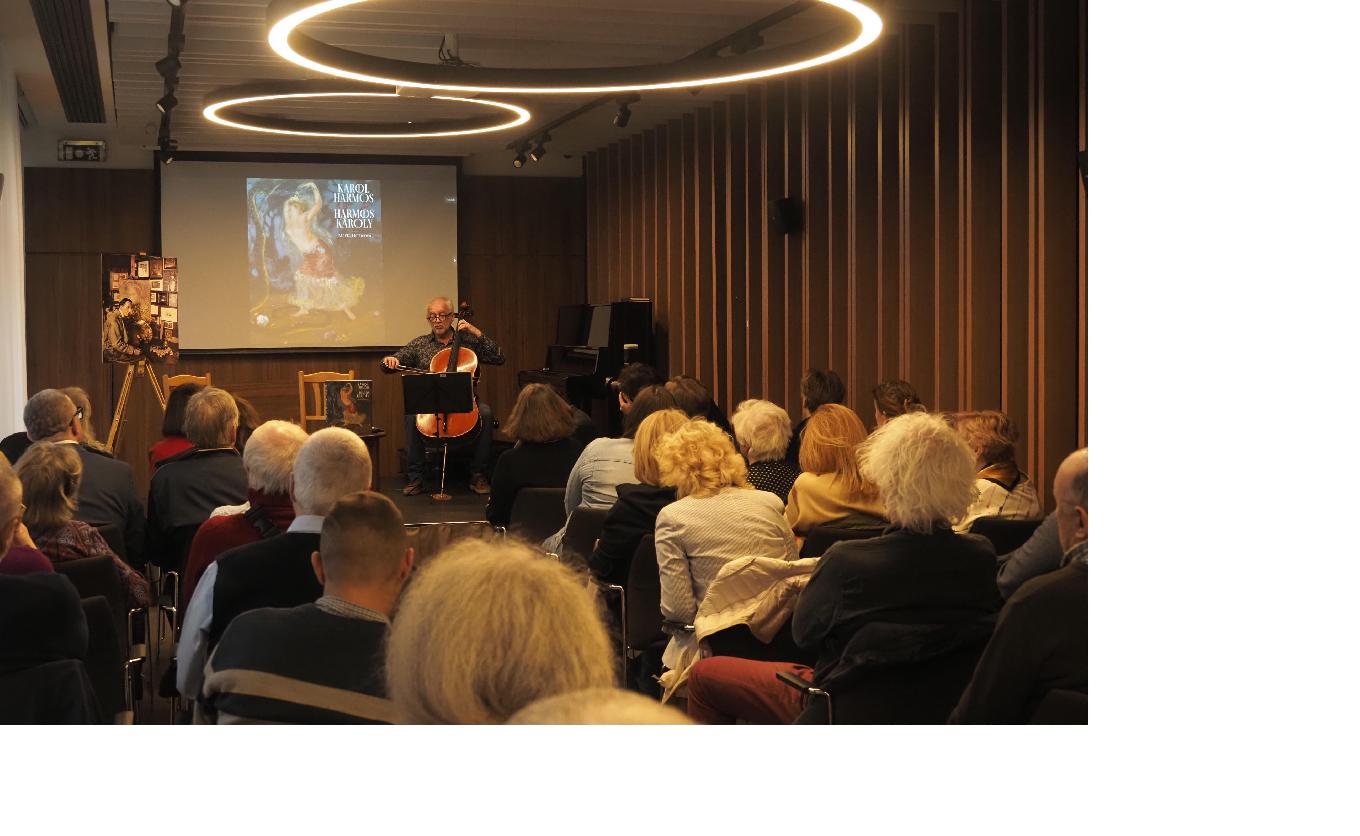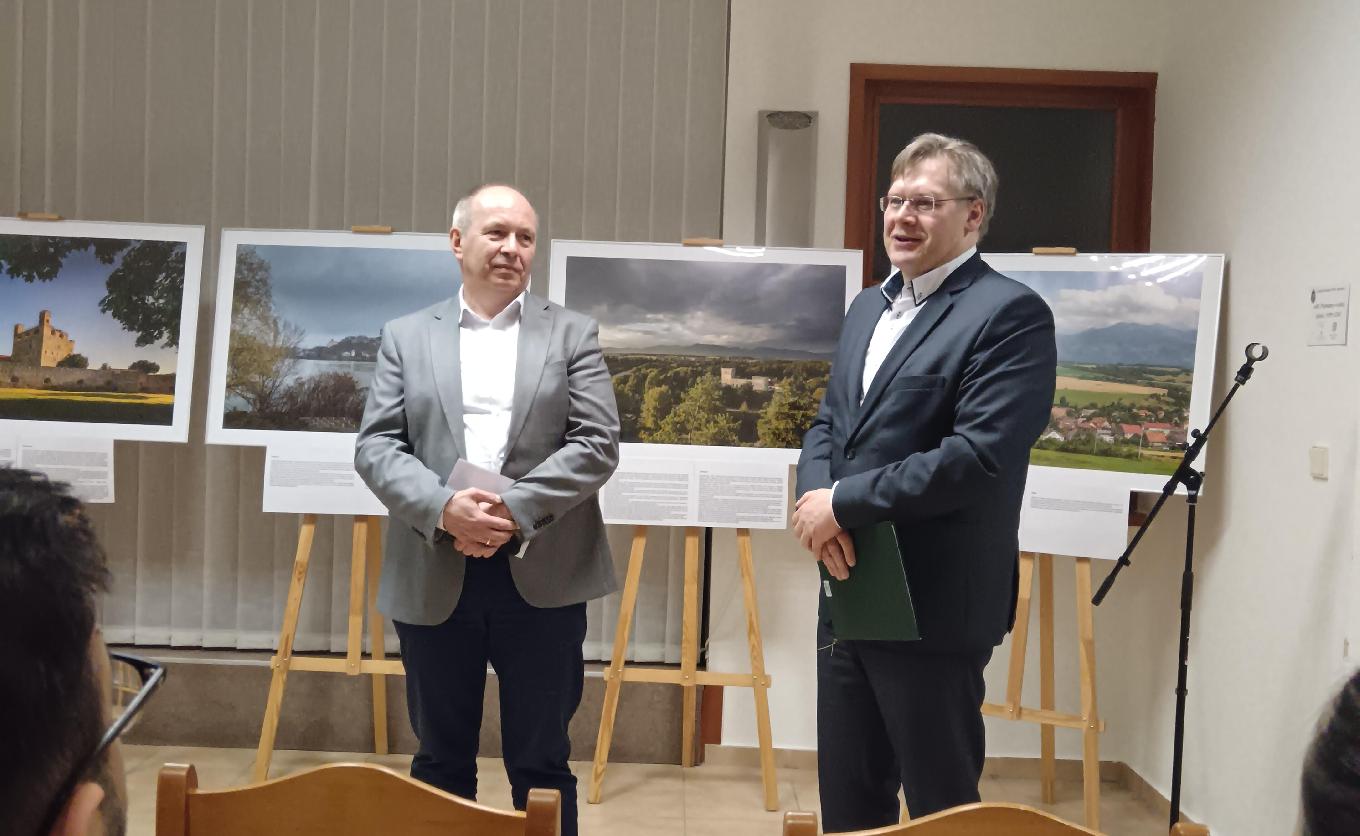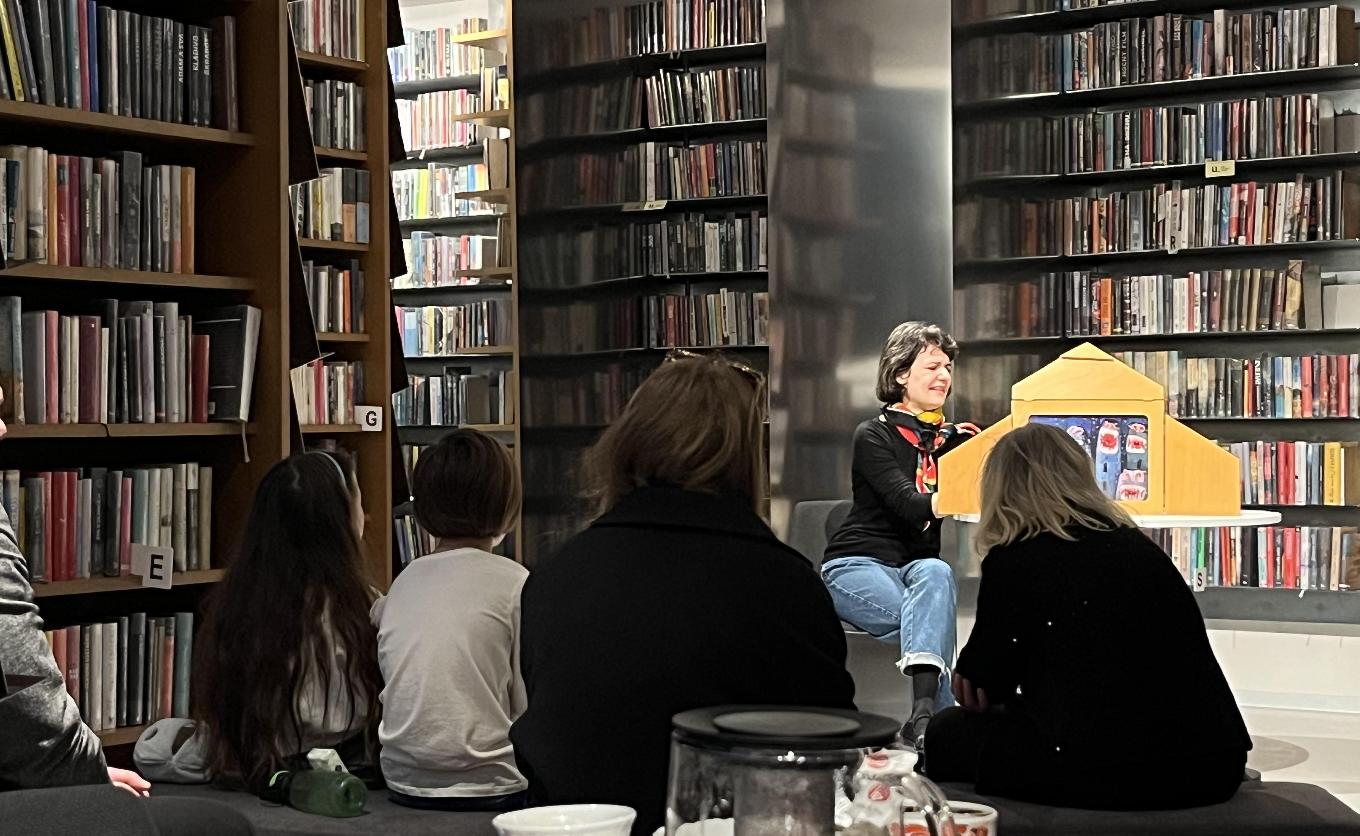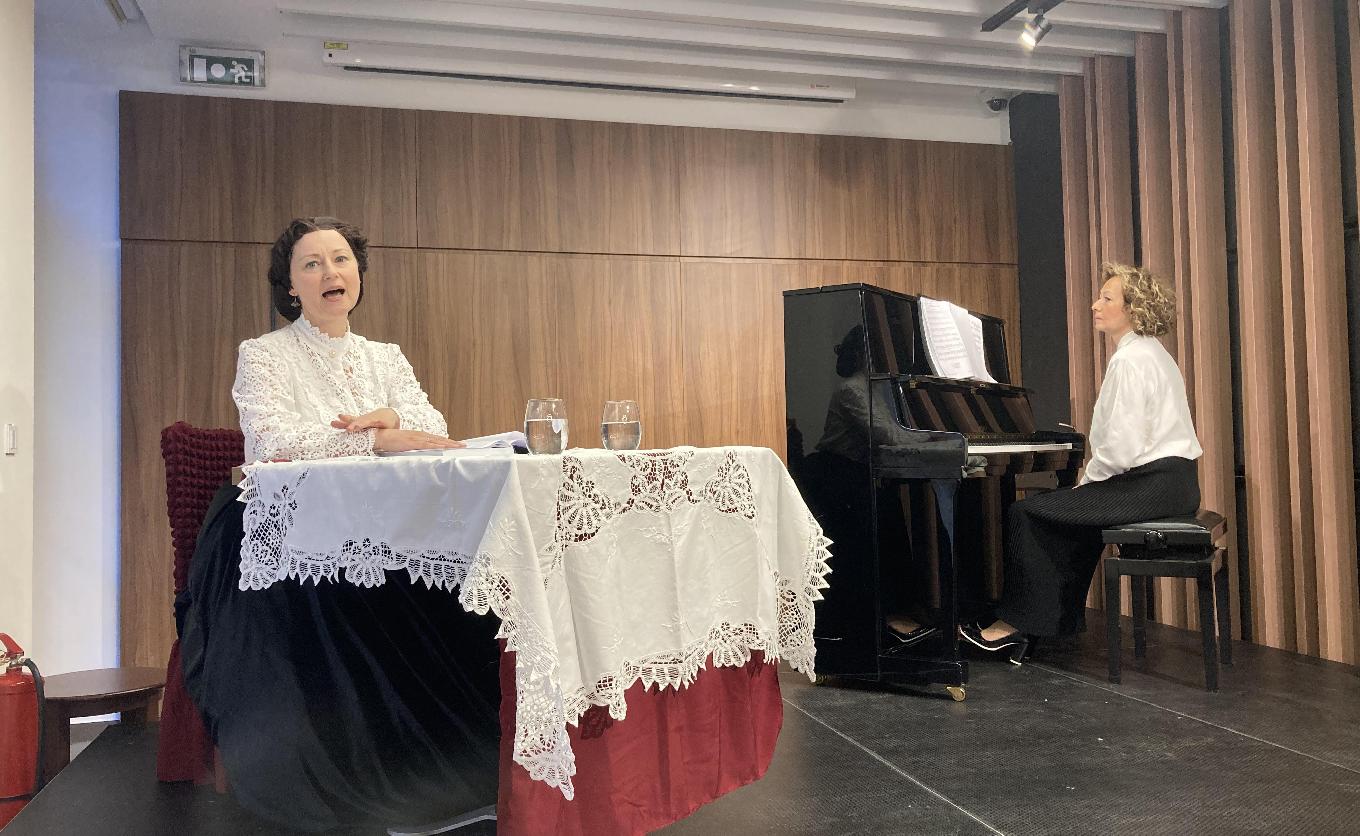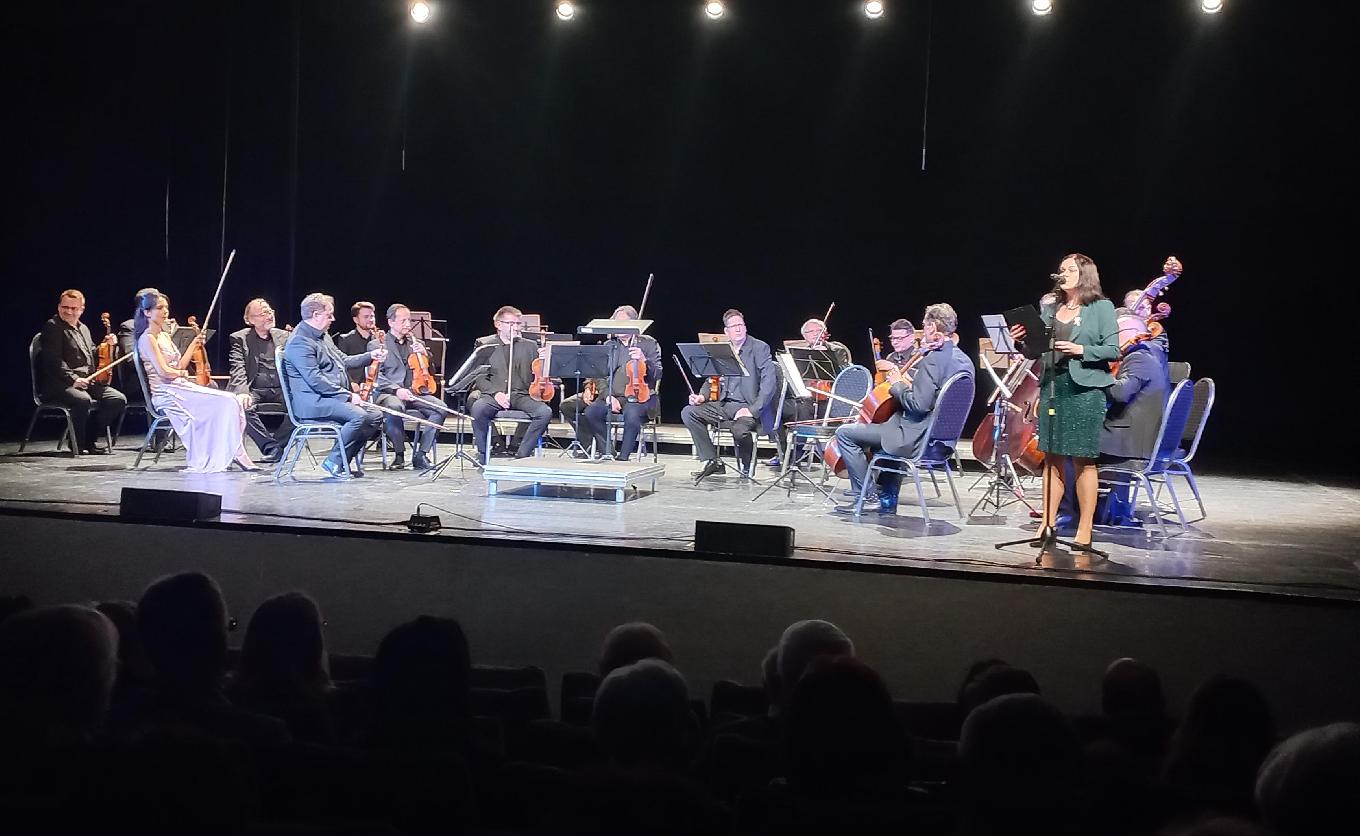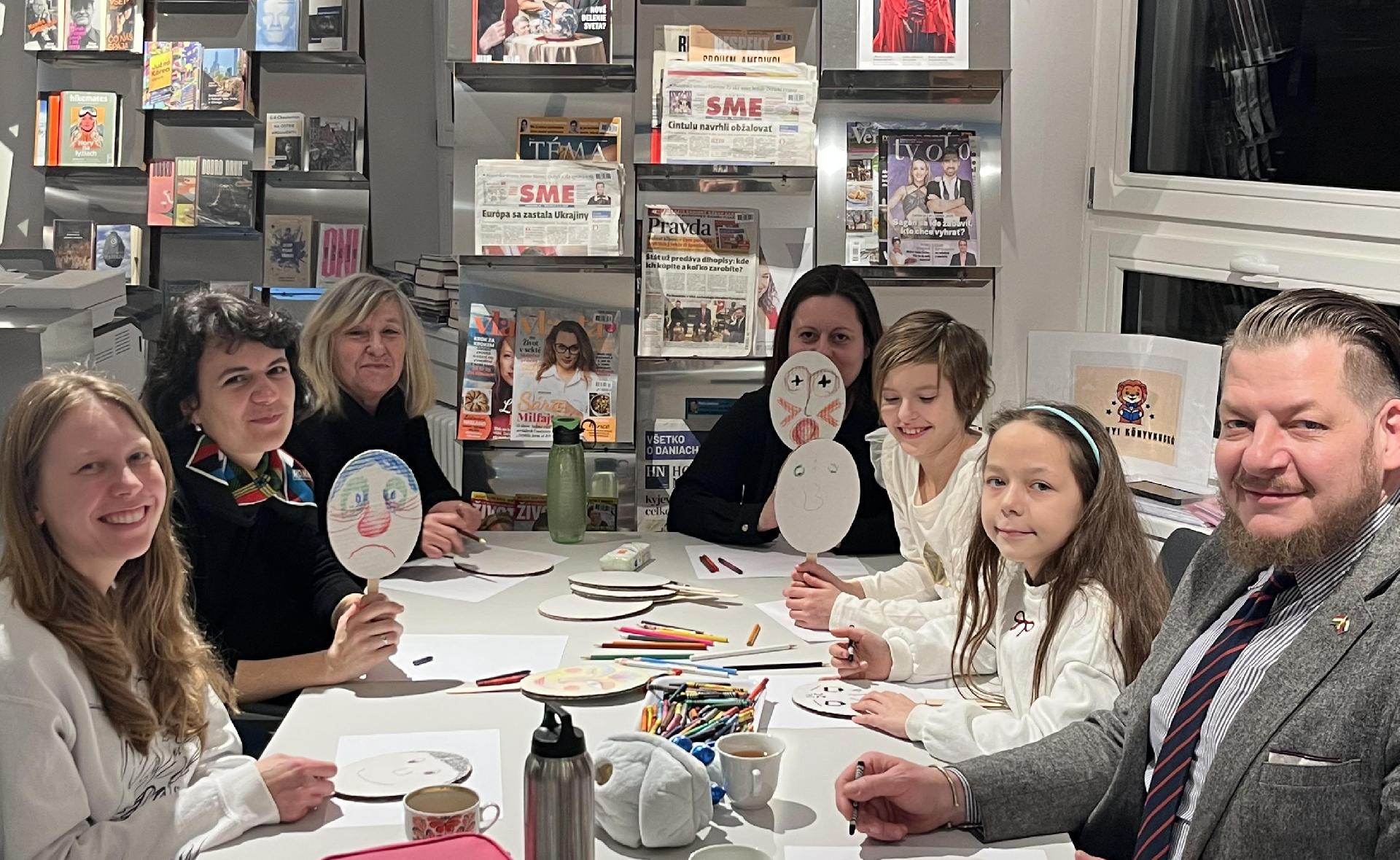
Spring Program Extravaganza in Slovakia
The Liszt Institute Bratislava delighted its audience with a variety of Hungarian cultural programs. They brought joy to the children with László Lázár’s paper theater story, and on March 15, they invited the adult audience to a concert in remembrance of the national holiday. The institute promoted the works of Bálint Balassi through an exhibition and a lecture, and helped Hungarian artists present their work at the Rhythms and Algorithms exhibition. The 200th anniversary of Mór Jókai's birth was celebrated with a performance by artists from the Operetta Theatre, and an exhibition was organized in memory of painter Károly Harmos, which included a book presentation.
On March 3rd, the Old Town Library in Bratislava hosted the second Hungarian-language paper theater story afternoon, in collaboration with the Bratislava Book Nook and the Liszt Institute Bratislava. This time, children had the opportunity to explore László Lázár's „Hétfejű Tündér” („The Seven-Headed Fairy”) in a performance by Zsuzsanna Somogyi. The interactive, educational story was followed by a craft workshop. This event series is an important initiative aimed at fostering a love for reading among Hungarian-speaking or bilingual children.
The Liszt Institute Bratislava and the Hungarian Embassy in Bratislava organized a festive concert on the occasion of the March 15th national holiday at the Egressy Béni City Cultural Center in Révkomárom. The evening’s performer was the Beliczay Chamber Orchestra, joined by 17 guest artists. The event included a welcome speech by Gábor Csaba, the Deputy State Secretary for Cultural Diplomacy at the Ministry of Culture and Innovation. The Institute, in collaboration with the Embassy and the Csemadok Bratislava Committee, also organized a commemoration in Bratislava, at the Petőfi statue in the Medicus Garden. This was the largest such event in Slovakia. The event, which attracted several hundred visitors, featured a speech by Ambassador Dr. Csaba Balogh.
The Galánta Center for Folk Culture and the Liszt Institute in Bratislava co-organized the photo exhibition and lecture titled “Ki volt Balassi Bálint – fotókiállítás és előadás” ("Who Was Balassi Bálint – photo exhibition and presentation") on March 13th in Galánta, at the headquarters of the Pázmány Péter Foundation. As part of the event, a special exhibition “Múlt idő nyomában – Balassi élete képekben” ("In the Footsteps of Time – The Life of Balassi in Pictures") was opened, featuring the works of photographer Béla Szabó. This was followed by a lecture titled “Első költőnk Balassi” ("Our First Poet Balassi") by literary scholar Péter Kőszeghy. The exhibition will be open for visits until April 15, 2025.
The „Rhythms and Algorithms” exhibition, organized by the Institute, will be open from March 17 to June 2, 2025. The exhibition, curated by Štěpánka Bieleszová, curator of the Olomouc Art Museum, focuses on the works of several generations of Central European female artists who work with lines. he seemingly simple elements—line, scratch, the touch of a pencil or pen tip—transform into an artistic tool that, like geometry, can create an independent and unique space. The selection highlights the work of five important Olomouc-based artists: Dagmar Havlíčková, Inge Kosková, Miriam Macků, Eleonora Pražáková, and Milena Valušková. The V4 countries are represented by the works of Slovak artists Klára Bočkayová and Kvetoslava Fulierová, Hungarian artists Katalin Nádor and Vera Molnár, and Polish artist Emilie Bohdziewicz-Winiarská.
On March 24th, the Liszt Institute organized a performance titled “Így Szerettek, Így Mulattak” (“This is How They Loved, This is How They Had Fun”), performed by artists from the Operetta Theatre. The memorial program celebrating the 200th anniversary of Mór Jókai’s birth offered glimpses into Jókai's life, the atmosphere of his time, and the fairy-tale-like outcomes of real-life situations. The performance included prose excerpts, set-to-music poems, period popular tunes, and reminiscences, with a lot of music. The production was met with great success among the audience.
On April 2, 2025, a retrospective exhibition of the works of Károly Harmos opened at the Liszt Institute in Bratislava. The event also featured the presentation of a monograph offering insight into his life and work, edited by Marta Herusová and published by Petrus in 2024. A conversation about the publication took place between Peter Chalupa, the publisher, and Marta Herusová. Károly Harmos, a painter, draughtsman, and teacher, was originally born as Karl Emil Handwerk in the mining settlement of Somogy, near Pécs. He studied in Budapest and Munich. His drawings and paintings, filled with bizarre characters and fantasy scenes, reflect the labyrinth of the human soul and existential fear of humanity in an original way. Harmos was a passionate lover of literature and drama, and he created numerous illustrations. His work was directed toward symbolism, but he also embraced more civilian forms of artistic expression.

